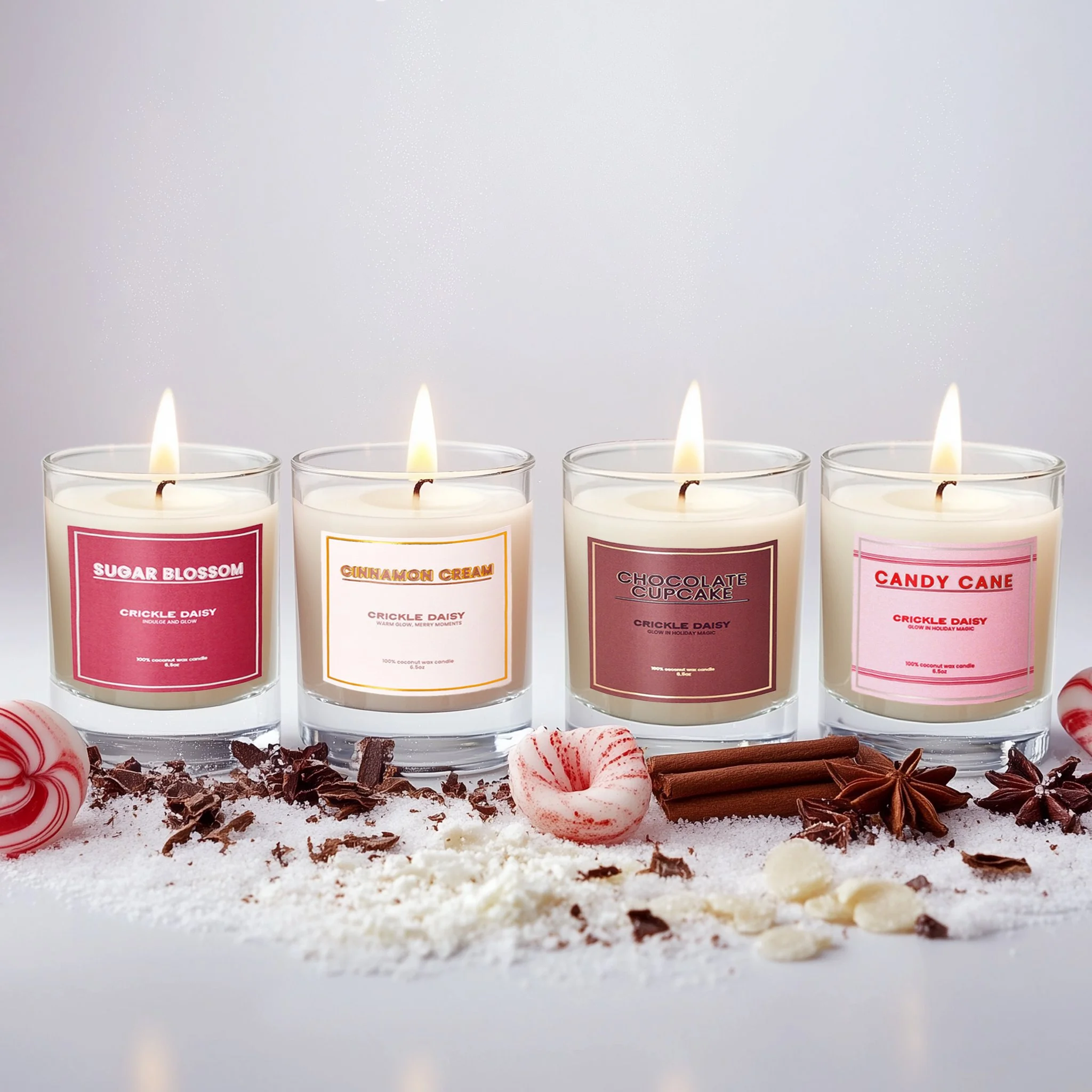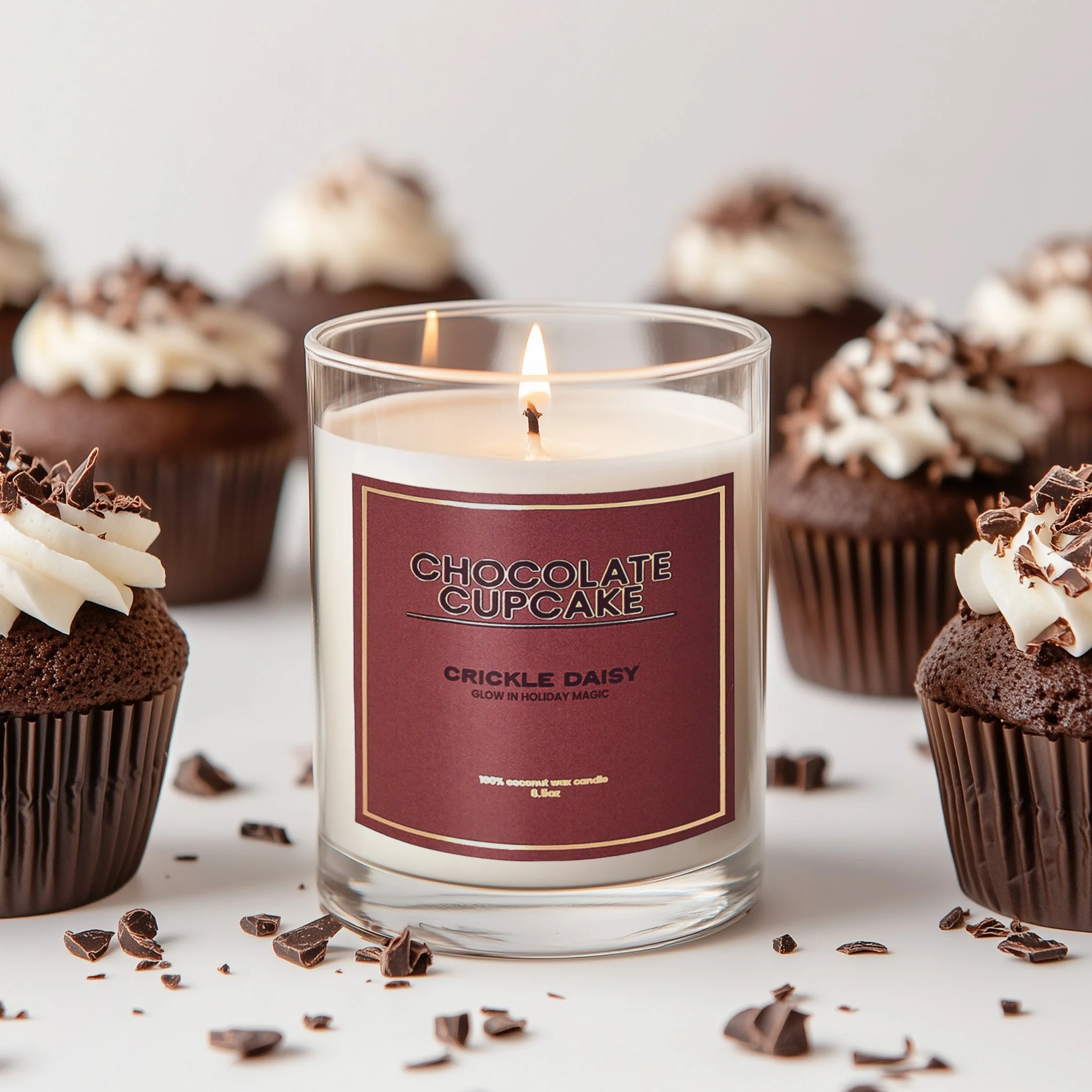How AI is Transforming Product Photography: The Future of E-Commerce Visuals
PROMPT // Stylized product shot featuring a clear glass candle with cinnamon sticks, dollops of smooth cream, and subtle greenery such as eucalyptus or rosemary, arranged on a clean white studio backdrop, with soft shadows and warm lighting
In a world where most shopping happens online, good photos are the front lines. They’re what people click, swipe, and zoom in on to decide if your product’s worth a buy. And with everything else in e-commerce getting faster and smarter, it’s time for product photography to catch up. That’s where AI steps in, and it’s not just hype – it’s actually making things better.
Artificial intelligence (AI) has a reputation for being complicated, but it’s making some very practical, hands-on changes to how product photography is done. We’re talking less about the sci-fi kind of AI and more about the tools that automate the repetitive, tedious stuff, leaving more time for creativity and refinement. Here’s a breakdown of how AI is changing the game for product photos and why it’s a must-have for anyone serious about selling online.
PROMPT // Studio shot of four clear glass candles in a row. Surrounding each candle are thematic elements like candy canes, chocolate shavings, cinnamon dust, and sugar sprinkles, with light snowfall and a clean white background, ensuring all four candles are fully visible
I. The Role of AI in Modern Product Photography
First things first: AI isn’t here to replace photographers. It’s here to cut out the mundane and leave the good stuff. Think about the usual editing tasks – removing a stray hair, adjusting shadows, fine-tuning the color so the red shirt doesn’t look orange on someone’s screen. These are small but crucial things, and AI can do them in seconds.
With AI tools, you can automate processes like background removal, color correction, and even lighting adjustments. AI detects and adjusts lighting inconsistencies across images, so you don’t have to spend hours manually making each photo match. It’s like having a digital assistant with an eagle eye, one that notices those tiny imperfections and fixes them while you focus on capturing the next shot.
And here’s the kicker: the more you use these tools, the better they get at learning what you want. They recognize patterns, like the way you like your shadows or the brightness level for a certain product line. It’s customization at scale, saving time and creating consistent, professional photos with every click.
PROMPT // Minimalist studio shot of a clear glass candle in the center, surrounded by chocolate cupcakes with sprinkles and chocolate shavings, clean white background, soft lighting, and elegant composition
II. Backgrounds: Beyond Just White
White backgrounds are a standard for e-commerce, and for good reason. They keep the focus on the product, avoid distractions, and, let’s be real, they make a product look like it belongs on a shelf, ready to be picked up. With AI, you don’t have to spend an hour with a pen tool cutting out every little edge – it’s automatic, and it’s perfect.
But here’s where things get interesting. AI isn’t limited to just white backgrounds. Let’s say you’re selling outdoor gear. A simple, neutral background can work, but a lifestyle shot of the gear in a rugged mountain setting might speak to your audience better. AI can help generate realistic, brand-aligned backgrounds, bringing your product to life in a way that doesn’t cost a fortune in set design or location shooting.
AI is also great at creating consistency across hundreds, even thousands, of images. The blue of the background in one image will match the blue in the next, and the white balance will be just right for each shot. This kind of uniformity is hard to get manually, but AI does it with ease, making your online shop look cohesive and professional.
PROMPT // High-quality studio photograph of candle wax dripping in a clean, professional setup. The wax should have a super smooth, silky texture as it drips down, captured with elegant lighting that highlights the shine and softness of the wax. Include carefully arranged props like delicate petals, smooth stones, or minimalist glass elements for a luxury beauty brand aesthetic. The scene should be less close-up, allowing more of the setup to be visible, while keeping a refined, high-end look with balanced lighting and composition. –ar 16:9
III. Higher Quality, Faster Turnaround
Time is money, and in the online world, it’s especially true. Speed matters. The faster you get your product images ready, the faster you can launch them online, beating your competition to the punch. And we all know that professionally edited photos aren’t something you can rush.
AI changes that. Let’s break it down: traditional editing might take hours, especially for high-quality images with lots of detail. AI-powered editing reduces that time by automating the repetitive parts, like fixing minor imperfections and enhancing clarity. With just a few clicks, you can have crystal-clear images that would take hours to produce otherwise.
What’s more, AI-based workflows allow you to scale without sacrificing quality. If you’re launching 50 new products, AI can streamline the editing process, letting you handle large batches of photos without needing to increase production time. You’re ready to go to market faster, with visuals that look sharp and professional.
PROMPT // Clear glass cinnamon cream candle in a studio setup, surrounded by cinnamon sticks, creamy textures, and subtle hints of cinnamon dust, on a minimalist white background with soft, warm lighting
IV. Real Benefits for Clients: Improved Appeal and Faster Market Entry
Now, let’s talk about what this means for clients – the people actually buying these products or looking at your services. First, the visual appeal of a polished, AI-enhanced photo is undeniable. These images aren’t just pretty; they’re confidence-builders. A high-quality image suggests a high-quality product, making it easier for customers to trust the product they’re seeing online. Better images can mean better engagement, longer on-page time, and ultimately, higher sales.
For businesses, faster delivery times mean getting to market faster. In today’s fast-moving world, every day you’re not online is a missed opportunity. With AI, product photography becomes not only more efficient but also more accessible for brands of all sizes. Smaller businesses benefit from the cost-effectiveness of AI, while larger brands can launch product lines faster, with images that look consistently high-end.
AI also helps keep costs down. By automating parts of the photography process, you don’t have to pay for extensive retouching or long hours of manual editing. This makes high-quality photography available at a fraction of the time and cost, so you can allocate resources elsewhere, like product development or marketing.
PROMPT // High-quality studio photograph of candle wax dripping in a clean, professional setup. The wax should have a super smooth, silky texture as it drips down, captured with elegant lighting that highlights the shine and softness of the wax. Include carefully arranged props like delicate petals, smooth stones, or minimalist glass elements for a luxury beauty brand aesthetic. The scene should be less close-up, allowing more of the setup to be visible, while keeping a refined, high-end look with balanced lighting and composition. –ar 16:9
V. What to Look for When Choosing an AI-Enhanced Product Photography Service
If you’re considering AI-powered product photography, choosing the right service is key. You want a team that doesn’t just dabble in AI but actually understands it. Look for a photography provider that has AI-integrated workflows, knows how to use the latest tools, and has a strong portfolio of AI-enhanced work. It’s all about the right balance of tech and talent.
Also, make sure they understand your brand. AI is a tool, but it’s only as good as the vision it’s working towards. You need photographers who use AI to bring out the best in your products and align with your brand’s style. Whether you need clean white backgrounds, lifestyle shots, or 360-degree visuals, AI can do it – as long as the person behind the camera knows how to use it right.
PROMPT // Minimalist studio shot of a reddish-pink sugar blossom candle in a clear glass, surrounded by sugar crystals and soft pink blossom petals, placed on a clean white background with soft lighting for a delicate and sweet aesthetic
Wrap Up
AI is transforming product photography, and it’s about time. It’s not here to take over, but it’s here to enhance what we’re already doing, to make the process smarter, faster, and ultimately, better. In a competitive e-commerce landscape, AI-driven photography can give you the edge, creating polished, professional visuals that capture attention and drive sales.
If you’re ready to step up your photography game, it’s time to consider AI. Not because it’s trendy, but because it delivers real, practical results. Faster time to market, high-quality images, and a consistent brand look – that’s what AI brings to the table. It’s the future of e-commerce visuals, and it’s already here.
PROMPT // High-quality studio photograph of candle wax dripping in a clean, professional setup. The wax should have a super smooth, silky texture as it drips down, captured with elegant lighting that highlights the shine and softness of the wax. Include carefully arranged props like delicate petals, smooth stones, or minimalist glass elements for a luxury beauty brand aesthetic. The scene should be less close-up, allowing more of the setup to be visible, while keeping a refined, high-end look with balanced lighting and composition. –ar 16:9








